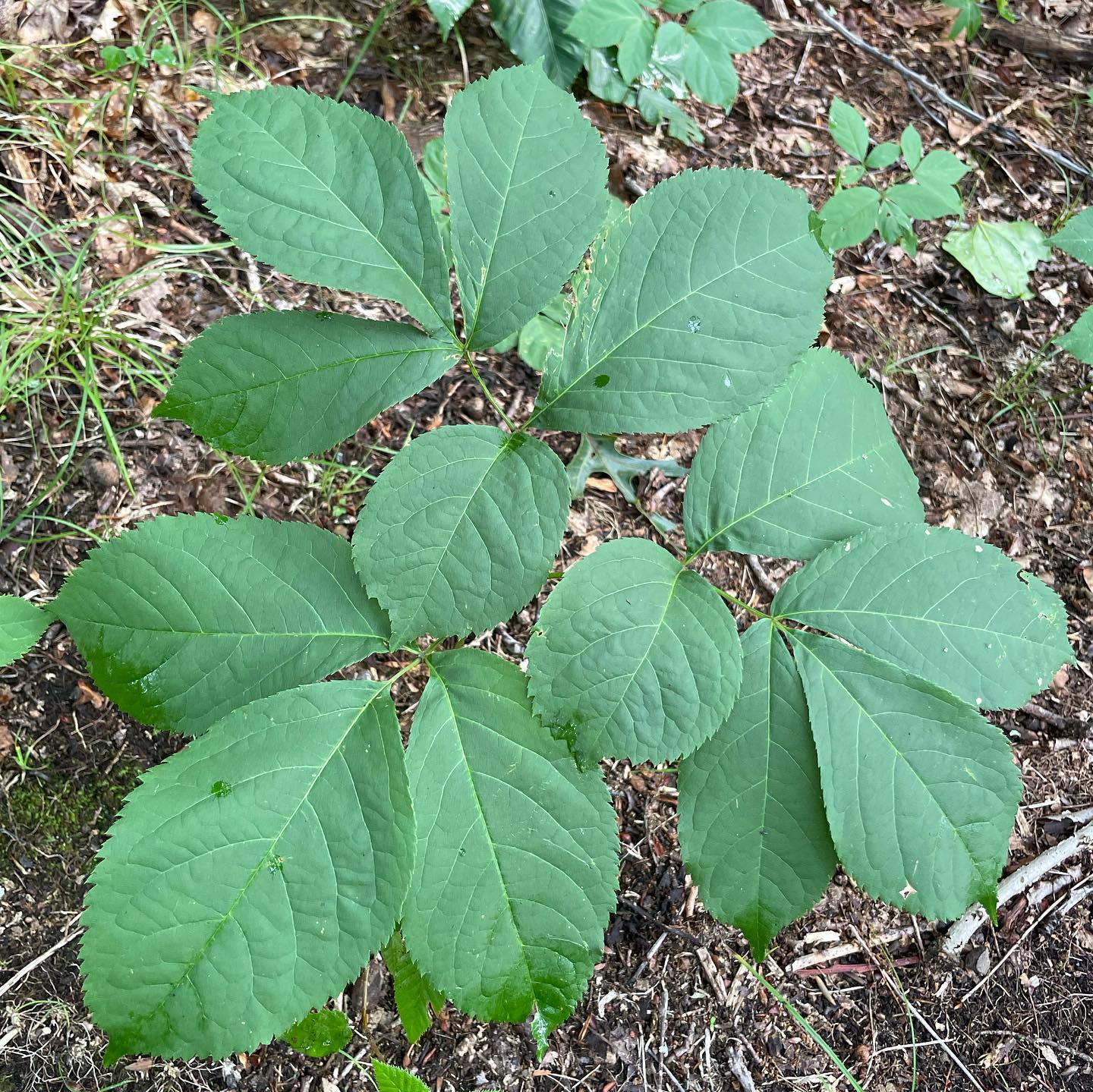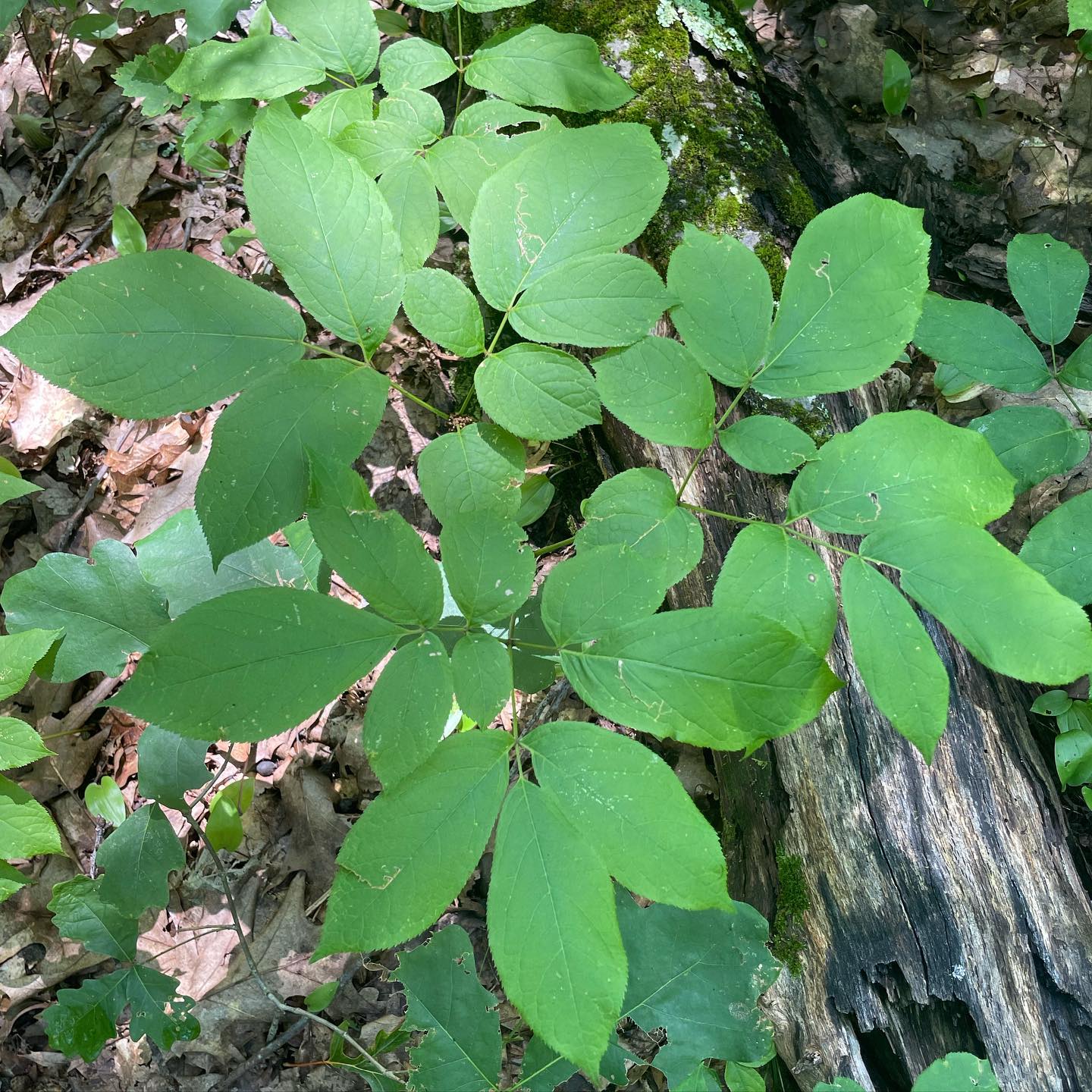Page Created by Connecticut Foraging Club
Upcoming Events | Meet the Instructors | Plant Archive | Mushroom Archive
----------------
Upcoming Events | Meet the Instructors | Plant Archive | Mushroom Archive
----------------
Wild Sarsaparilla (Aralia nudicaulis) is a common, native plant in the ginseng family. It can be found in forests in southern New England.

Wild sarsaparilla has erect stems that divide into a whorl of 3 stems, which each form 3-7 leaflets. The leaflets are bronze in the spring, green in the summer, and yellow/red in the fall. The plant grows up to 3 feet tall.

Wild sarsaparilla produces tiny white flowers in spherical clusters, which ripen to blue-black berries in mid-summer. The root system runs horizontally about 5 inches under soil. Roots can grow to be over 10 feet long.
The entire Wild sarsaparilla plant is technically edible, although berries are too astringent to be palatable. The carrot-like taste of young shoots can be enjoyed in early spring before the leaves expand. Young shoots are high in omega 3’s.

The rhizome has a sweet, aromatic taste which can be substituted for sassafras in root beer. True sarsaparilla (Smilax officinalis) is a tropical plant that was used in root beer in the 19th century before it was deemed unsafe. True sarsaparilla is not closely related to Wild sarsaparilla.
Wild sarsaparilla tea has been used medicinally to treat stomach aches, tooth aches, sore throats, and heart pain. It is said to help restore proper function of the cardiovascular system.

Wild sarsaparilla must be differentiated from poison ivy. Poison ivy leaves are always in groups of three and are not as finely toothed. Poison ivy also tends to have a woody base.
--
Written by Amy Demers, founder of the Connecticut Foraging Club. To learn more about foraging in Connecticut, check out our upcoming classes.






